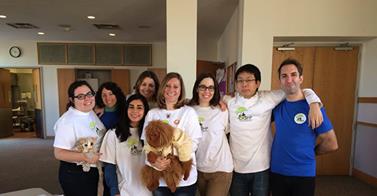One of the many great opportunities provided by CASHP for its lucky graduate students is the chance to widen the scope of our research and to build interdisciplinary partnerships with researchers across the world in the form of a lab rotation. In the course of our PhDs, HomPal students usually do two lab rotations, one domestic and one international. In my case, I had a bit of trouble deciding where to go – which lab would best augment my research, teach me useful new skills, and help me meet the right people?
For those who don’t know, I’m a bone person. From my first year of undergrad right up until this moment, I’ve always been fascinated by bone – how it grows, how each element came to be shaped in a particular way and, particularly, how it responds to the daily gauntlet we put it through. So how does bone respond to physical activity? There are a couple of ways to look at it.
Cross-sectional geometry can tell you a bit about a bone’s mechanical properties. Trabecular bone architecture can inform us about loading patterns within a bone. Up until very recently, however, analyses of the site where a muscle inserts into bone (called an enthesis) could tell us surprisingly little. In fact, because the size of an enthesis is traditionally thought to reflect the actual usage of a muscle when in fact this is unsupported, using them can really muddle our understanding of how archaeological and fossil populations were using their bodies. My goal as a PhD student at CASHP is to find new ways to look at entheses that will show directly how much the muscle was used, using histological methods. This work can contribute to myriad discussions in paleoanthropology, ranging from discussions on fossil locomotor behavior to phylogenetic attributions.
Problem was, I was missing a key skill for this type of work. For all my experience with bone biology, histology and digital imaging techniques, I had never worked with muscle. Yikes – how was I supposed to know how a muscle is being used based on bone structural variation if I didn’t know how muscle characteristics themselves vary with use? So, I turned to someone whose life’s work has been built on muscle –
Dr. Rui Diogo was once in my position as a PhD student at CASHP. He’d worked under Dr. Bernard Wood using comparative hominid muscle morphology to attempt phylogenetic reconstructions. He continues his work today at Howard, another DC-area university, where I joined him for my own lab rotation. With the help of Dr. Diogo as well as his incredibly helpful colleagues Dr. Janine Ziermann and Dr. Julia Molnar, I designed a project looking at variation in muscle characteristics like physiological cross-sectional area and pennation angle (both contributing factors to a muscle’s force-generating capacity) across apes of different locomotor patterns. This past semester has been dedicated to dissecting the apes we had on hand, including a baby chimp and a baby orangutan. Even though I’d already had a human anatomy course, I still struggled to find my bearings in those specimens. Although fundamentally similar, a big divide separated my expectation of what these muscles should look like from what they actually looked like.
Was the gastrocnemius supposed to be that puny!? Yeah, so it was.
Where the heck are you, flexor pollicis longus!? Oh, chimps and orangutans don’t really have it, didn’t you know?
What is that!? The dorsoepitrochlearis muscle, apparently.
It was an exercise in trial and error. With every muscle, I got a little better at recognizing the differences in the geographies of these non-human bodies. And, no matter how lost I got or how manhandled the muscle tissue, Dr. Diogo always knew his way around the specimen.
For this lab rotation, I’ll have dissected out 8 muscles from the upper and lower limbs from 3 apes – good for training, but not enough for a publication. For that reason, Dr. Diogo, my advisors and I have planned for me to go to the University of Valladolid this summer. You see, Valladolid receives fresh cadavers of all the primates that die in Spanish zoos, resulting in a staggering collection of optimally dissectable specimens. This year, they’ve got an array of monkeys, both Old World and New. I’ll be taking samples from 5 of these monkeys for muscle architecture studies (the PCSA and pennation angle work) before moving on to the University of Barcelona to work with Dr. Josep Potau on a new method of staining muscles to visualize fatigability of the tissue – important in determining the endurance capabilities of each muscle.
I feel incredibly lucky to be a part of CASHP. Their philosophy of intercollegiate training and interdisciplinary research provided me with an avenue to pursue a field of research to which I had never previously had access but has informed my perspective on my own research in profound ways. I not only met some really interesting new people, I woke to a background of literature, learned dissecting skills and found my way around a chimp body. I’m excited to continue this work in Spain and to, down the road, see what I can do with my next lab rotation!


